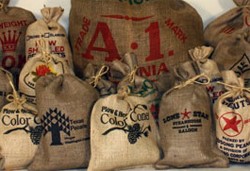Emerald technology ventures and partners...
Industrial and consumer goods companies Beiersdorf, Chevron, Henkel and WM will join the fund as founding limited par
Industrial and consumer goods companies Beiersdorf, Chevron, Henkel and WM will join the fund as founding limited par
MGA Entertainment, Inc.
The FDA has announced the availability of the draft guidance entitled “Cybersecurity in Medical Devices: Quality Syst
The AI-powered OptiCarton system helps to optimize the filling of boxes from a pre-configured set of cartons and can
The KTM42D is a fully reusable double-pallet temperature-controlled packaging container, for the transportation and e
Innovation is essential to achieving goals and customers’ growing expectation to buy sustainable/sustainably packaged
The CGF’s Coalition of Action on Plastic Waste has published an independent scientific study which demons
Pangea, a beauty brand with the mission to offer the first plant-based and truly sustainable collection of bioactive,
With customers increasingly adopting laser marking solutions for more of their product identification and packaging a
India has rejected demands from large global and domestic beverage firms to exempt some plastic straws from a ban tha
Kremsmünster, Austria (March 2022).
Cracker Jack unveiled a line of limited-edition bags featuring Cracker Jill, a new character meant to celebrate women


It's Earth Month, which means time for The Body Shop to do something big—since it is known as an activist beauty reta
This technology is the future of product interaction with consumers, which distributes product messaging to consumers
Coles’ Together to Zero waste ambition sees the supermarket continue to work with industry partners, suppliers, and c
Railways advises passengers to secure the vehicle with cushion material to avoid any damage during travel in parcel v
As the nation continues to witness ever increasing incidents adding to the siege of national discourse on objections